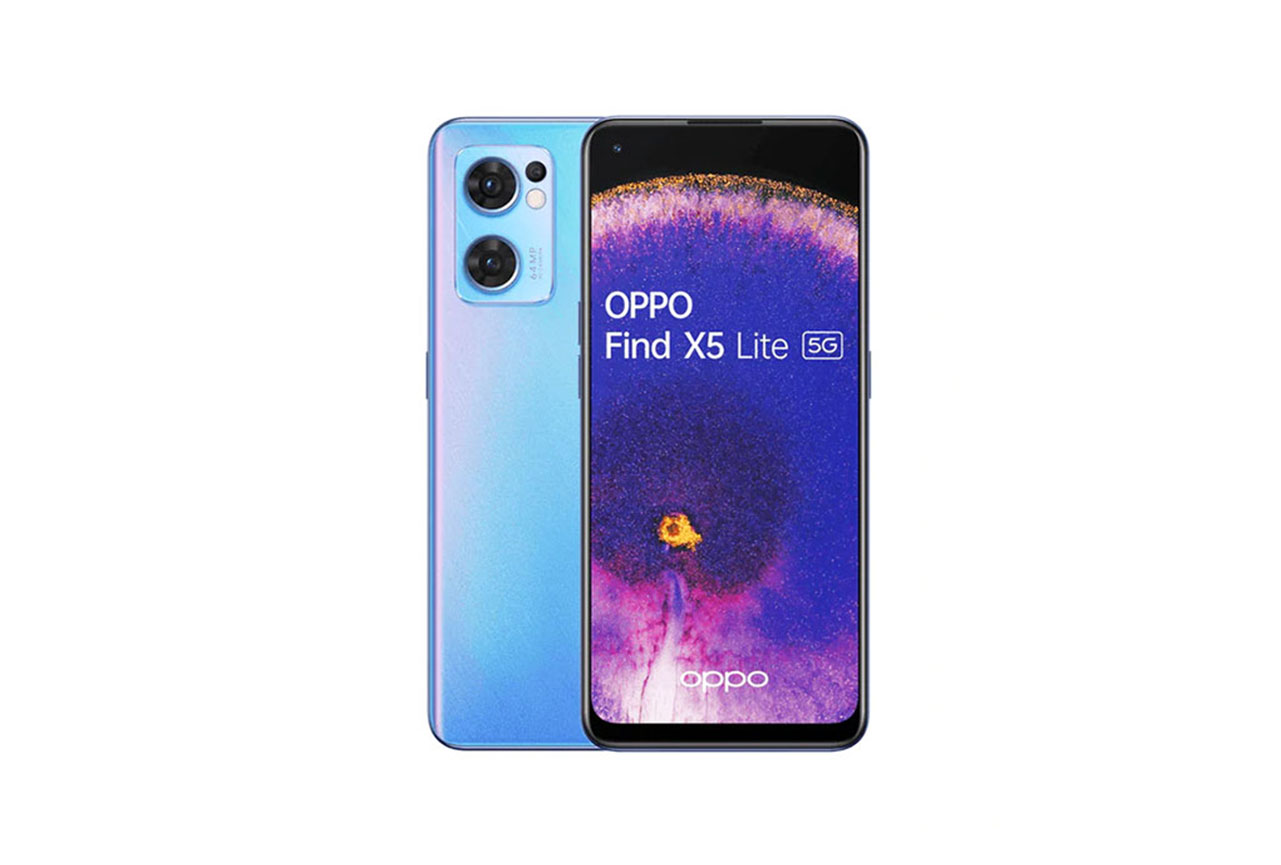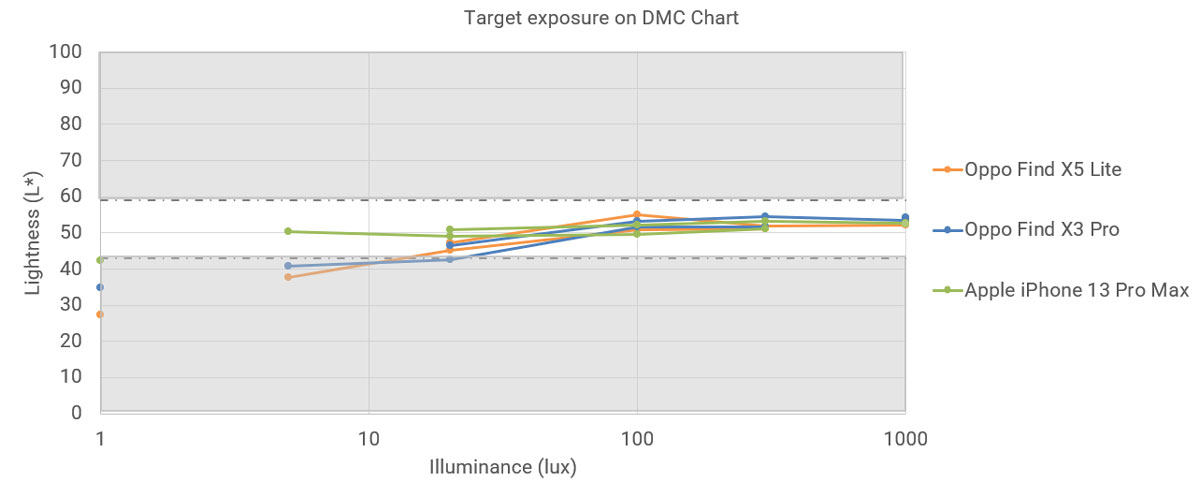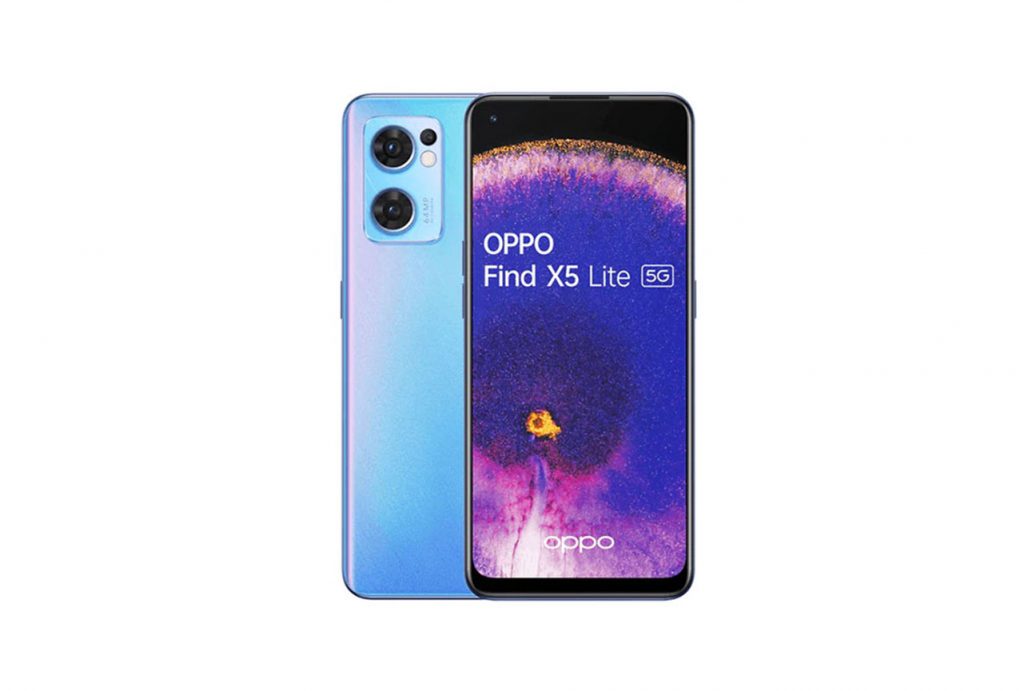The Oppo Find X5 Lite competes in the High-End segment against competition like the Samsung A72, Xiaomi 11T or Redmi K40 Pro+ and offers a 6.43-inch AMOLED display with Full-HD resolution, 8GB of RAM and a MediaTek Dimensity 900 chipset.
The rear camera combines a 64MP primary shooter with an 8MP ultra-wide and a dedicated 8MP macro camera for close-ups. In video mode the camera is capable of recording 4K footage at 30 frames per second.
Let’s see how the Oppo Find X5 Lite did in our DXOMARK Camera test.
Key camera specifications:
- Primary: 64MP sensor, 24mm equivalent focal length, f/1.7-aperture lens, AF
- Ultra-wide: 8MP sensor, 15mm equivalent focal length, f/2.25-aperture lens
- Macro: 8MP sensor, f/2.4-aperture lens
- 4K at 30fps, 1080P at 60fps/30fps (1080p/30fps tested)
About DXOMARK Camera tests: For scoring and analysis in our smartphone camera reviews, DXOMARK engineers capture and evaluate over 3000 test images and more than 2.5 hours of video both in controlled lab environments and in natural indoor and outdoor scenes, using the camera’s default settings. This article is designed to highlight the most important results of our testing. For more information about the DXOMARK Camera test protocol, click here. More details on how we score smartphone cameras are available here.
Test summary
Scoring
Sub-scores and attributes included in the calculations of the global score.
 Oppo Find X5 Lite
Oppo Find X5 Lite

95
camera
96
Huawei Pura 70 Ultra
Best: Huawei Pura 70 Ultra (130)
87
Apple iPhone 16 Pro
Best: Apple iPhone 16 Pro (130)
87
Huawei Pura 70 Ultra
Best: Huawei Pura 70 Ultra (125)
94
Xiaomi 15 Ultra
Best: Xiaomi 15 Ultra (125)
79
Huawei Pura 70 Ultra
Best: Huawei Pura 70 Ultra (117)
61
Xiaomi Redmi 12 5G
Best: Xiaomi Redmi 12 5G (82)
50
Huawei Pura 70 Ultra
Best: Huawei Pura 70 Ultra (85)
51
Apple iPhone 16 Pro
Best: Apple iPhone 16 Pro (93)
56
Xiaomi 15 Ultra
Best: Xiaomi 15 Ultra (128)
73
Huawei Pura 70 Ultra
Best: Huawei Pura 70 Ultra (122)
88
Oppo Find X8 Pro
Best: Oppo Find X8 Pro (116)
78
Oppo Find X8 Pro
Best: Oppo Find X8 Pro (120)
86
Huawei Pura 70 Ultra
Best: Huawei Pura 70 Ultra (120)
74
Oppo Find X6 Pro
Best: Oppo Find X6 Pro (118)
83
Apple iPhone 16 Pro
Best: Apple iPhone 16 Pro (120)
80
Xiaomi 12S Ultra
Best: Xiaomi 12S Ultra (86)
91
Apple iPhone 16 Pro
Best: Apple iPhone 16 Pro (119)
Use cases & Conditions
Use case scores indicate the product performance in specific situations. They are not included in the overall score calculations.
Outdoor
Photos & videos shot in bright light conditions (≥1000 lux)
Indoor
Photos & videos shot in good lighting conditions (≥100lux)
Lowlight
Photos & videos shot in low lighting conditions (<100 lux)
Friends & Family
Portrait and group photo & videos
Please be aware that beyond this point, we have not modified the initial test results. While data and products remain fully comparable, you might encounter mentions and references to the previous scores.
Position in Global Ranking

164
th
4. Apple iPhone 16 Pro Max
157
10. Apple iPhone 15 Pro Max
154
22. Honor Magic4 Ultimate
147
26. Apple iPhone 14 Pro Max
146
26. Motorola Edge 50 Ultra
146
26. Samsung Galaxy S25 Ultra
146
32. Samsung Galaxy S24 Ultra
144
34. Apple iPhone 13 Pro Max
141
34. Google Pixel 9 Pro Fold
141
38. Samsung Galaxy S23 Ultra
140
43. Tecno Camon 40 Pro 5G
138
45. Vivo X80 Pro (Snapdragon)
137
52. Samsung Galaxy S22 Ultra (Snapdragon)
135
52. Vivo X80 Pro (MediaTek)
135
59. Samsung Galaxy Z Fold6
133
59. Samsung Galaxy S24+ (Exynos)
133
59. Samsung Galaxy S24 FE
133
59. Samsung Galaxy S24 (Exynos)
133
69. Samsung Galaxy Z Flip6
132
70. Apple iPhone 12 Pro Max
131
70. Samsung Galaxy S22 Ultra (Exynos)
131
81. Samsung Galaxy Z Fold5
128
83. Asus Smartphone for Snapdragon Insiders
127
83. Samsung Galaxy Z Flip5
127
83. Samsung Galaxy S23 FE
127
88. Vivo X70 Pro (MediaTek)
126
92. Asus Zenfone 11 Ultra
125
92. Samsung Galaxy S22+ (Exynos)
125
97. Samsung Galaxy Z Fold4
124
100. Apple iPhone 11 Pro Max
122
105. Xiaomi Redmi Note 13 Pro Plus 5G
121
106. Samsung Galaxy Z Fold3 5G
120
106. Samsung Galaxy S22 (Exynos)
120
106. Xiaomi Redmi Note 13 Pro 5G
120
111. Xiaomi Redmi Note 14 Pro+ 5G
118
114. Apple iPhone 12 mini
117
114. Samsung Galaxy S21 Ultra 5G (Snapdragon)
117
114. Samsung Galaxy S21 FE 5G (Snapdragon)
117
114. Samsung Galaxy S21 5G (Snapdragon)
117
120. Vivo X60 Pro 5G (Snapdragon)
116
123. Motorola Edge 50 Neo
115
123. Samsung Galaxy S21+ 5G (Snapdragon)
115
123. Samsung Galaxy S21 Ultra 5G (Exynos)
115
133. Crosscall Stellar-X5
113
133. Xiaomi Redmi Note 12 Pro+ 5G
113
137. Samsung Galaxy Z Flip4
112
139. Samsung Galaxy Z Flip3 5G
111
139. Samsung Galaxy S21+ 5G (Exynos)
111
139. Samsung Galaxy S21 5G (Exynos)
111
144. Samsung Galaxy A55 5G
108
144. Vivo X60 Pro 5G (Exynos)
108
149. Samsung Galaxy A54 5G
107
150. Xiaomi Redmi Note 14 Pro 5G
106
153. Samsung Galaxy A35 5G
104
154. Motorola Edge 40 Neo
103
154. Xiaomi Redmi Note 14 5G
103
156. Xiaomi Redmi Note 12 Pro 5G
102
158. Motorola Edge 30 Pro
101
160. Apple iPhone SE (2022)
100
162. Motorola Moto g75 5G
96
168. Samsung Galaxy A34 5G
92
168. Samsung Galaxy A25 5G
92
172. Xiaomi Redmi Note 13 5G
91
174. Motorola Moto g85 5G
88
174. Samsung Galaxy A52s 5G
88
174. Samsung Galaxy A52 5G
88
178. Motorola moto g54 5G
85
178. Samsung Galaxy A33 5G
85
178. Samsung Galaxy A16 LTE
85
181. Honor Magic6 Lite (5300 mAh)
84
181. Xiaomi Redmi Note 14
84
184. Samsung Galaxy A15 5G
83
186. Samsung Galaxy A15 LTE
81
187. Samsung Galaxy A53 5G
79
189. Xiaomi Redmi Note 11 Pro 5G
78
191. Samsung Galaxy A16 5G
77
193. Motorola Moto G35 5G
75
193. Xiaomi Redmi Note 13
75
196. Honor Magic5 Lite 5G
74
198. Samsung Galaxy A23 5G
70
199. Xiaomi Redmi Note 12 5G
69
202. Motorola moto g34 5G
67
202. Samsung Galaxy A14 5G
67
204. Motorola Moto G62 5G
66
205. Xiaomi Redmi Note 11S 5G
65
207. Xiaomi Redmi Note 12
63
212. Honor Magic4 Lite 5G
61
214. Xiaomi Redmi Note 11
60
216. Crosscall Stellar-M6
59
223. Xiaomi Redmi 10 2022
51
225. Samsung Galaxy A22 5G
48
Position in High-End Ranking

22
nd
10. Xiaomi Redmi Note 13 Pro Plus 5G
121
11. Xiaomi Redmi Note 14 Pro+ 5G
118
16. Xiaomi Redmi Note 12 Pro+ 5G
113
19. Samsung Galaxy A55 5G
108
20. Samsung Galaxy A54 5G
107
21. Apple iPhone SE (2022)
100
27. Samsung Galaxy A52s 5G
88
27. Samsung Galaxy A52 5G
88
29. Samsung Galaxy A53 5G
79
Pros
- Good exposure in bright light on primary camera
- Wide dynamic range in bright light and indoors for photo and video
- Good exposure at all tele ranges
- Preview image on display close to final capture
- Fairly neutral white balance in video
Cons
- Lack of saturation results in unnatural skin tones
- Exposure instabilities in bright light and indoors
- Fusion artifacts and ghosting
- Lack of detail in photo and video
- High noise levels in low light video
- Moving texture artifacts in video
- Ineffective video stabilization when walking or running
With a DXOMARK Camera score of 106 the Oppo Find X5 Lite delivers an average performance for a device in the High End segment. The camera produces well exposed images when the light conditions are not too challenging. However, photos suffer from a lack of saturation and detail as well as exposure instabilities across consecutive shots and some image artifacts. Overall results are quite similar to previous Oppo phones in this class, for example the Find X3 Lite or Reno 6.
In bright light the Find X5 Lite is capable of capturing images with good exposure and a fairly wide dynamic range.
Still images tend to be well exposed in bright outdoor light and indoors but in low light exposure drops quickly. A fairly wide dynamic range ensures good detail in highlights and shadows but instabilities are visible across consecutive shots. Images also lack saturation which results in unnatural skin tones, and we also observed a lack of detail in most captures. Ghosting and fusion artifacts can be noticeable, too, and in low light using the flash will typically get you better results than flash-off mode.
In this graph you can see that exposure is good in bright light and under indoor conditions but drops off in low light.

This graph shows lightness measured on the portrait crop of the DMC chart against the light level (in lux). The white area represents the region where the lightness is considered correct.
At 16mmThe Oppo’s ultra-wide camera offers a narrower field of view than many competitors. We also found dynamic range to be more limited and texture levels to be lower than on many devices in its class. On the plus side target exposure is generally accurate and image noise is fairly well under control.
When zooming in at close range detail is decent and on a similar level as the competition. However, at medium and long range settings we can see a noticeable loss of detail, especially in low light. The camera does well for tele exposure as long as you don’t shoot in low light but again dynamic range is more limited than on some competitors. Our testers also observed some white balance casts in low light and inaccurate color rendering.
Oppo Find X5 Lite, medium range tele, low light: green color cast and bad color rendering
Oppo Find X5 Lite, crop: strong lack of texture
Oppo Find X5 Pro, medium range tele, low light: good white balance and nice color
Oppo Find X5 Pro, crop: good texture
Apple iPhone 13 Pro Max, medium range tele, low light: yellowish white balance, accurate color
Apple iPhone 13 Pro Max, crop: good texture
When recording video the resulting footage shows a fairly wide dynamic range under outdoor and indoor condition. Exposure is pretty accurate as well but we did observe some instabilities. Video clips lack fine detail and under indoor lighting noise becomes noticeable, too. Our testers also observed autofocus convergence issues and instabilities in indoor and outdoor conditions. When walking or running while recording video stabilization is not doing a good job and a lot of camera motion is still noticeable.
In low light video performance is very poor and video footage shows a strong lack of detail and noise. The dynamic range is limited, resulting in highlight and shadow clipping, and the autofocus can lock on the wrong target and is generally unstable, especially in high-contrast scenes.
This sample clip shows good exposure and accurate white balance. However, we can also see exposure adaptation and autofocus issues. More fine detail is lost on the subject’s face than on the comparison devices while the level of noise is similar. There are also some moving texture artifacts in the clouds.
Oppo Find X5 Lite, good color but exposure and and autofocus adaptation issues, noise on face
Oppo Find X3 Pro, wise dynamic range and nice color, noise well under control
Apple iPhone 13 Pro Max, limited dynamic range, noise on face



 164th
164th 22nd
22nd







DXOMARK encourages its readers to share comments on the articles. To read or post comments, Disqus cookies are required. Change your Cookies Preferences and read more about our Comment Policy.